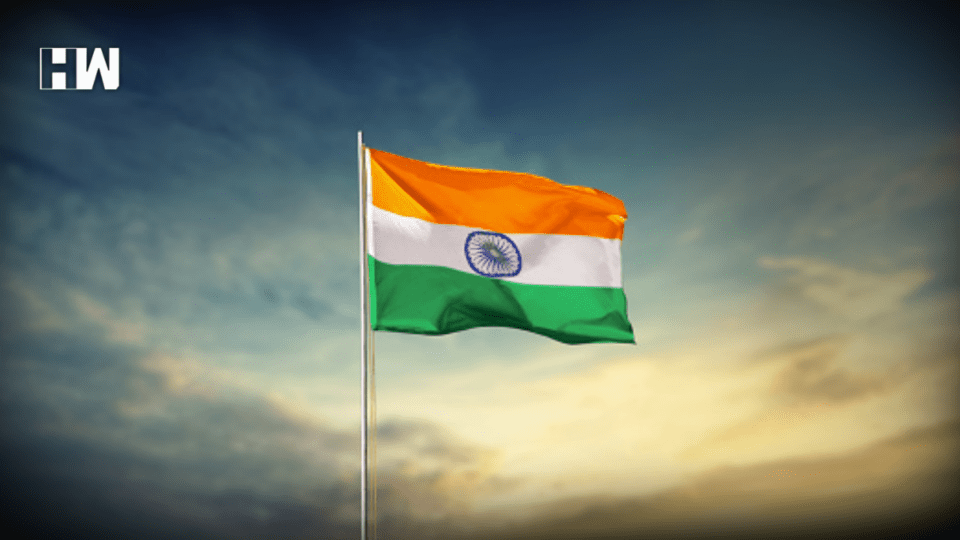Why does India celebrate Republic Day on the 26th Of January? Lets look at its significance of this day. Each year India celebrates Republic day on the 26th of January to mark the day when India became a republic
New Delhi: Each year India celebrates Republic day on the 26th of January to mark the day when India became a republic and was no longer cloistered under the dominant rule of the Britisher empire.
Significantly, this day also seals the commemoration of the ‘Constitution of India’ that came into effect in 1950.
The constitution of India, is the supreme command of the country. It is the a framework of amalgamating guidelines such as fundamental rights, directive principles, along with the duties that the government and citizens should follow.
India first gained independence from the British Empire on August 15, 1947. But the country did not have a constitution then. It was only drafted approximately two weeks later by the Constituent Assembly of India.
Also, Read: Chhattisgarh: In A First, Third-Gender Personnel To Take Part In Republic Day Parade
Members of the assembly included Dr. Rajendra Prasad, B R Ambedkar, B N Rau, K.M. Munshi, Muhammed Saadulah, Alladi Krishnaswamy Iyer, Gopala Swami Ayyangar, N. Madhava Rao.
On January 26, 1950, the constitution came into force. Thus, many believed it was vital to celebrate and implement the Indian Constitution on January 26 because it had been adopted on November 26, 1949, a day linked with national pride.
26th January, Republic Day is celebrated across all states. The national capital; Delhi each year holds a grand show, wherein a parade starts from Rastrapati Bhavan (President’s office) and marches right up to India Gate. The president of India unfurls the national flag, as everyone in attendance sings the National Anthem – Jana Gana Mana. This is followed by a 21-gun salute being fired by the Indian Army Regiment of Artillery.
The parade is accompanied by regiments of the Indian army, the Indian Navy, and the Air Force who are dressed in their official decorations.
Here are ten interesting facts about 26th January; Republic Day Of India
*Handwritten Constitution: Our Indian Constitution is handwritten/calligraphed and not printed
*Finalized Constitution: The Indian Constitution came into existence on this day after 2 years, 11 months, and 17 days
*Official Time Of Legal Circulation: The Constitution of India officially came into existence on January 26, 1950, at 10:18 AM
*First Tenure Of President As India: On January 26, 1950, Dr. Rajendra Prasad officially began his tenure as the First President of Democratic India at the Durbar Hall of the government house
*First Parade At Rajpath: The first parade of Republic Day in 1955 was held at Rajpath
*Architect Of The Constitution: Dr. B. R. Ambedkar is known as the Architect of the Constitution of India, became the First Minister of Law and Justice post Independence
*“Abide With Me”: The song “Abide with me,” which is also regarded as Mahatma Gandhi’s favorite song, is played each year during the Beating Retreat on Republic day. It is actually a Christian song that Scottish poet Henry Francis Lyte and composer William Henry Monk created in the 19th century.
*Purna Swaraj Diwas: Republic Day also marks the significance of Purna Swaraj Diwas, also known as the Declaration of Indian Independence Day
*Address By the President Of India: On Independence Day, the nation is addressed by the Prime Minister of India whereas, on January 26, Republic Day, the nation is addressed by the President of India each year.
*Prestigious Award Ceremony: On Republic Day, bravery awards like Ashoka Chakra, Veer Chakra, Maha Veer Chakra, Param Veer Chakra, and Kirti Chakra are awarded to deserving candidates as part of the celebrations during the Republic Day Parade
#History Behind the Indian Tricolor;
Pingali (or Pinglay) Venkayya, a university lecturer, presented Gandhi with a flag design in 1921 that had the colors of the two major religions, red for Hindus and green for Muslims. Lala Hans Raj Sondhi proposed the traditional spinning wheel, which was connected to Gandhi’s fight to make Indians self-reliant by constructing their own garments from regional fibers, be added to the center of the horizontally divided flag.
In May 1923 at Nagpur during peaceful protests against British rule, the flag was carried by thousands of people, hundreds of whom were arrested.
Even though India was split in two after the war and a Muslim-dominated Pakistan was awarded its own statehood, Britain agreed to explore granting India freedom. The Indian national flag was formally raised on July 22, 1947.
The spinning wheel was replaced by a blue chakra, known as the ‘Dharma Chakra’ (also known as the “Wheel of the Law”), but the stripes remained the same: saffron-white-green. When the Mauryan kingdom made its first major attempt to unify all of India under a single administration, pillars were built all around the empire bearing the Dharma Chakra, which was connected to the emperor Ashoka in the third century BCE.
As an independent media platform, we do not take advertisements from governments and corporate houses. It is you, our readers, who have supported us on our journey to do honest and unbiased journalism. Please contribute, so that we can continue to do the same in future.

